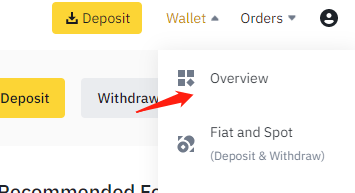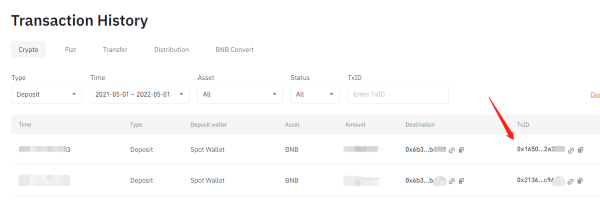Devise fiat
Crypto-monnaies
What Is Transaction ID and How to Find It?
If you have ever made a transaction on the blockchain, you may have encountered the term Transaction ID or TXID. But what exactly is a TXID and why is it important? In this article, we will explain what a TXID is, how it works, and how to find it on different platforms.
What Is a Transaction ID(TXID)?
A TXID or transaction ID is a unique string of letters and numbers that identifies a specific transaction on the blockchain. The string is simply the double SHA-256 hash of a transaction. This hash can be used to look up a transaction on a node or block explorer.
A TXID serves as an identification number that labels each transaction on the blockchain. It helps to track and trace the status of a transaction, such as:
- Sender address
- Receiver address
- Total amount sent
- Date of transfer
- Block height
- Fees paid
- Number of confirmations
A TXID contains no personal information, so it is completely safe to share. However, it also means that transactions are not reversible or editable once they are confirmed on the blockchain.
How Is Transaction ID(TXID) Generated?
A TXID is generated by applying a cryptographic hash function to the data of a transaction. A hash function is a mathematical algorithm that takes any input and produces a fixed-length output that is unique for each input. The hash function used for TXID is SHA-256, which means it produces a 256-bit output. This output is then CB58 encoded, which means it is converted into a string of 58 characters that can include letters and numbers. This string is the TXID that we see on the block explorer or the platform. The TXID is deterministic, which means that the same transaction will always produce the same TXID.
How to Find a TXID?
If you are using CEX, you can find your TXID from the platform you made a withdrawal or deposit. For example, you can find the TXID from "Transaction History" on Binance, or through the following steps:
- Log in to your Binance account. Click "Wallet" and select "Overview" from the drop-down menu.
- Click "Transaction History". Here you can see all your deposit or withdrawal history. You can find the TXID under "TxID".
- You can also access your transaction history from "Wallets" - "Spot" - "Transaction History" on the Binance App. Tap on the relevant transaction to find the TXID.
- When you contact Binance Support for issues regarding deposit or withdrawal, you can provide the TXID of the transaction to our CS team so we can better assist you.
- You can also click on the TXID to see the status of the relevant transaction in that blockchain explorer.
Note that your funds will be transferred to the relevant block after the nodes have confirmed the transaction. If the network is congested, it may take longer for your funds to arrive.
If you are using other platforms, such as core wallet, electrum wallet, blockchain wallet, or coinbase exchange, you can also find your TXID by navigating to transactions tab and locating the transaction for which you'd like to know the txID.


How to Look up Transactions by using Transaction ID(TXID)?
You can look up transactions by using TXID on a block explorer, which is a website that allows you to view the details of transactions and blocks on a blockchain. For example, if you want to look up a Bitcoin transaction, you can use a block explorer such as blockchain.com, or many others. To do so, you need to follow these steps:
- Copy the TXID of the transaction that you want to look up. You can find it from the platform that you made or received the transaction, or from your transaction history.
- Go to the block explorer website and paste the TXID in the search box. You may need to select the blockchain that you want to search on, such as Bitcoin, Ethereum, or Binance Smart Chain.
- Click on the search button or press enter. The block explorer will show you the details of the transaction, such as the sender address, receiver address, amount, fees, date, block height, and number of confirmations.
For example, this is how you can look up the first-ever Bitcoin transaction sent by Satoshi Nakamoto to Hal Finney on blockchain.com :
- Copy the TXID of the transaction: f4184fc596403b9d638783cf57adfe4c75c605f6356fbc91338530e9831e9e16
- Go to https://www.blockchain.com/explorer and paste the TXID in the search box. Make sure you select Bitcoin as the blockchain.
- Click on the search button or press enter. The block explorer will show you the details of the transaction, such as:
"-- Sender address: 12cbQLTFMXRnSzktFkuoG3eHoMeFtpTu3S
-- Receiver address: 1Q2TWHE3GMdB6BZKafqwxXtWAWgFt5Jvm3
-- Amount: 10 BTC
-- Fees: 0 BTC
-- Date: 2009-01-12 03:30:25 UTC
-- Block height: 170
-- Number of confirmations: 789563"

You can also click on the sender address, receiver address, or block height to see more details about them on the block explorer.
You can use a similar method to look up transactions on other blockchains, such as Ethereum or Binance Smart Chain, by using a block explorer that supports them. For example, you can use etherscan.io for Ethereum or bscscan.com for Binance Smart Chain.
Conclusion
A TXID is a unique identifier that labels each transaction on the blockchain. It helps to track and trace the status of a transaction and verify its validity. You can find your TXID from the platform you made a withdrawal or deposit, or by using a block explorer. A TXID contains no personal information, so it is safe to share with others.
Stay tuned to CoinCarp Social Media and Discuss with Us:
- 9 Costly Mistakes Crypto Holders Make (And How to Avoid Them) Débutant Apr 29, 2025 3m
- Axiym Reaches $132 Million in Volume, Streamlining Global Payments via Avalanche Débutant Apr 24, 2025 2m
- NodeHaus Debuts as Real-Time RPC Monitoring Tool for Blockchain Foundations Débutant Apr 24, 2025 2m
- Hermetica Launches 2.0 Update, Boosting Bitcoin-Backed Stablecoin Transparency and Usability Débutant Apr 23, 2025 2m